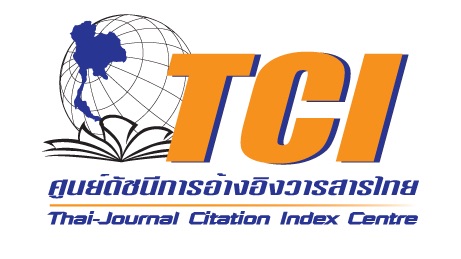Gastronomy Tourism Management on Nakhon Sawan District Nakhon Sawan Province
Keywords:
Potential, Gastronomy Tourism, Mueang Nakhon Sawan DistrictAbstract
This research has the objective for 1) to study the satisfaction of tourists in the Gastronomy Tourism on the readiness in accessing to the tourist attraction convenient, the convenient facilities and the good management. and; 2) to determine the guidelines of the Gastronomy Tourism in Mueang Nakhon Sawan District, Nakhon Sawan Province to create the sustainability. The researcher used the Quantitative Research. To gather the information by using questionnaires. The research sample of the research are, the tourists that travelled to use the service of restaurant in total of 500 persons. To analyze with the descriptive statistics. This will show about the frequency value, the percentage value, the average and the standard deviation. The result of research found out that; 1) the respondent of the questionnaires has the satisfaction in the good management of the restaurant in the most level. While the readiness in accessing to the tourist attraction and facilities, the respondent of questionnaires has the satisfactory in the medium level due to some of the restaurants are difficult to be accessed and there is the limitation in the parking area. The findings of the study are reflected in the Gastronomy Tourism in Mueang Nakhon Sawan District, is not ready and doesn't have enough capacity. Nakhon Sawan Province has a reputation on food but it still not the main city to attracted the tourists. 2) the guideline in the Gastronomy Tourism Management in Mueang Nakhon Sawan District should held a meeting together, to consult and find the guideline in setting the activity to contribute to tourism being the stimulation to create repeat trips and word of mouth, including having the connection of the tourist attraction, the restaurant, the accommodation, and the souvenir shop, as well as contributing to Nakhon Sawan becoming a tourist destination in the future.
References
กระทรวงการท่องเที่ยวและกีฬา. (2558). การบูรณาการเพื่อขับเคลื่อนยุทธศาสตร์การท่องเที่ยวไทย พ.ศ. 2558-2560. http://www.jpp.moi.go.th/ files/MOTS.pdf
ชนิษฐา ใจเป็ง. (2561). ศักยภาพการท่องเที่ยวเชิงอาหารริมทางบนถนนตลาดวโรรส เชียงใหม่. สรุปการประชุมวิชาการระดับชาติ ครั้งที่ 3 และการประชุมวิชาการระดับนานาชาติ ครั้งที่ 1 (น.198-208) มหาวิทยาลัยเจ้าพระยา. มหาวิทยาลัยเจ้าพระยา.
ชาคริต อ่องทุน และพิทักษ์ ศิริวงศ์. (2559). ศักยภาพการท่องเที่ยวเพื่อการเรียนรู้เกี่ยวกับอาหารริมทางบนถนนเยาวราช. วารสารสังคมศาสตร์ มหาวิทยาลัยเทคโนโลยีราชมงคลตะวันออก, 6(1), 129-137.
เบญจมาภรณ์ ชำนาญฉา. (2561). การท่องเที่ยวเชิงอาหาร: ศักยภาพและความได้เปรียบของประเทศไทย. วารสารวิชาการสมาคมสถาบันอุดมศึกษาเอกชนแห่งประเทศไทยในพระราชูปถัมภ์ สมเด็จพระเทพรัตนราชสุดาฯ สยามบรมราชกุมารี, 24 (1), 103-116.
ภูริ ชุณห์ขจร และคณะ. (2563). การสร้างแรงจูงใจในการท่องเที่ยวเชิงอาหารไทยท้องถิ่นเสริมภูมิต้านทาน ในวิถีชุมชนสุขภาพ หลังการแพร่ระบาดของไวรัส Covid-19. วารสารวิชาการคณะมนุษยศาสตร์และสังคมศาสตร์ มหาวิทยาลัยราชภัฏเทพสตรี, 11(2), 143-154.
ศรุดา นิติวรากร. (2557). อาหารไทย: มรดกทางวัฒนธรรมของชาติ. วารสารวิชาการมหาวิทยาลัยราชภัฏพระนคร, 5(1), 171-179.
ศิริวรรณ เสรีรัตน์ และคณะ. (2541). การบริหารการตลาดยุคใหม่. บริษัทธีระฟิล์มและไซเท็กซ์ จำกัด.
หทัยชนก ฉิมบ้านไร่ และ รักษ์พงศ์ วงศาโรจน์. (2558). ศักยภาพอาหารพื้นเมืองและแนวทางการส่งเสริมการท่องเที่ยวผ่านอาหารพื้นเมืองจังหวัดน่าน. วารสารวิชาการการท่องเที่ยวไทยนานาชาติ, 11(1), 37-53.
อภินันท์ จันตะนี. (2550). สถิติและการวิจัยทางธุรกิจ. มหาวิทยาลัยราชภัฏพระนครศรีอยุธยา.
CNN Travel. (2021, April 14). CULINARY JOURNEYS. The world's 50 best foods.https://edition.cnn.com/travel/article/world-best-food-dishes/index.html?fbclid=IwAR1hRiy5-Jy_3SvRdzEQFa5blOwtlm-zEEZifPPrPgfcjzdPAf_N2jdUb5Y
Downloads
Published
How to Cite
Issue
Section
License

This work is licensed under a Creative Commons Attribution-NonCommercial-NoDerivatives 4.0 International License.







